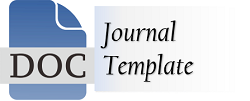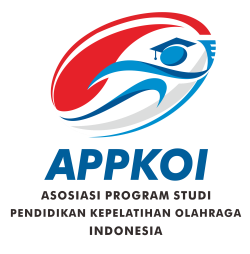Development of A Recovery Model For Hockey Athletes Based on Propioceptive Neuromuscular Facilitation (PNF)
DOI:
https://doi.org/10.31599/bzqryx07Keywords:
Recovery, Atlet Hockey, PNFAbstract
The research was conducted because of the need for a recovery model that can be used by hockey athletes. Research and development was conducted to produce a product in the form of a Recovery model for Hockey athletes based on Propioceptive Neuromuschular Facilitation (PNF). The research was conducted using the research and development method of the Borg and Gall model. Research data were collected using a validation questionnaire, an attractiveness questionnaire, and documentation. Data analysis of research results using Content Validity Index and Content Validity Ratio techniques. The results of the study are recovery model products for hockey athletes based on Propioceptive Neuromuschular Facilitation (PNF) developed according to ten steps from the Borg and Gall model, namely research and information collection, planning, develop preliminary form of product, preliminary field testing, main product revision, main field testing, operational product revision, operational field testing, final product revision, and dissemination and implementation. The recovery model product for hockey athletes based on Propioceptive Neuromuschular Facilitation (PNF) shows the average value generated is 0.64 with the interpretation of high validity so that it is feasible and effective to use in the recovery activities of Hockey athletes. The recovery model product for hockey athletes based on Propioceptive Neuromuschular Facilitation (PNF) developed is very attractive to users with a percentage of attractiveness of 87.33% so it is possible that users will use the developed product in recovery activities.
Downloads
References
Akbar, Muhammad Yobbie and Widiyanto. (2019). Endurance Ability
Anaerobic and Aerobic Endurance of State University Men's Hockey Players
Yogyakarta. Medikora Journal, 12(1), 1 - 11.
Alim, Arovah, Indra, Rismayanthi. 2021. Application of Integrated Recovery techniques
for Improving the Stability of Physical Mental and Technical Performance of Tennis athletes.
Journal of Sports Science and Technology, 14(2), 1 - 27.
Alter, Michael J. (2020). 300 Sports Stretching Techniques. Jakarta: King
Grafindo Persada.
Arifin, Zainal (2020). Education Research: New Methods and Paradigms.
Bandung: Teenage Workshop.
Arikunto, S. (2019). Research Procedures; A Practical Approach. Jakarta:
Rineka Cipta.
Attaqi, Hartiwan and Santosa. (2016). Development of Stick Hockey Tool Model
For Training Beginner Hockey Players, Journal of Physical Education,
Sport, Health and Recreation, 5(3), 151 - 157.
Bompa. (2019). Periodization Theory and Methodology of Training. New York:
Human Kinetics.
Budiwanto, Setyo. (2019). Sports Training Methodology. Malang: University of
State of Malang Press.
Casa, D. J., et.al. (2019). Fluid Needs for Training, Competition, and Recovery in
Track-and-Field Athletes. International Journal of Sport Nutrition and
Exercise Metabolism, 29(2), 175 - 180. https://doi.org/10.1123/ijsnem.2018-
Chaabene Chaabène, H., Hachana, Y., Franchini, E., Mkaouer, B., & Chamari, K.
(2017). Physical and Physiological Profile of Elite Karate Athletes. Sports
Medicine Journal. 42(10), 829 - 843.
https://doi.org/10.2165/11633050000000000-00000.
Danardono, Hajar. (2018). Differences in the Effect of Active Recovery Type,
Corstability, and Passive, Post-Maximum Exercise on Decrease in
Lactic Acid Levels in Response to Body Mass Index. Thesis, No.
Published. Sebelas Maret University Surakarta.
Daniel, Duta (2018). The PNF Muscular Strength, Endurance and Flexibility.
Journal series Physical Education and Sport, 18)7), 621 - 630.
Dantes, Nyoman. (2020). Research Methods. Yogyakarta: Andi Offsed.
Ervana, A. (2020). Effectiveness of External ATP Provision on Recovery
Gastrocnemius Muscle Fatigue Rana SP. Bogor: FKH IPB.
Firmanus, et.al. (2023). Recovery Using Cold Water Immersion for
Athlete fitness after high-intensity training. Journal
Sports coaching education, 14(1), 6 - 12.
https://doi.org/10.23887/jjpko.v12i3.
Fitrianto and Maarif. (2020). Effect of Active Recovery on Acid Content
Lactate in Students of the University of Sports Science Study Program
State of Jakarta. Scientific Journal of Sport Coaching and Education, 4(1), 32 - 36.
Fowler, Brian et.al. (2019). Ice Hockey Officiating Retention: A qualitative
Understanding of Junior Ice Hockey Officials' Motivations in Canada.
Managing Sport and Leisure Journal, 24(1-3), 18 - 31.
https://doi.org/10.1080/23750472.2019.1565944.
Giriwijoyo, H.Y.S., Santosa and Zafar, Didik. (2018). Sports Faunal Science.
Yogyakarta: Faculty of Sport and Health Education, University of
Indonesian Education.
Hakim, Arif Rahman, Sunaryadi, Yadi, and Mulyana, Dadan. (2022). Effectiveness
Rotation Drill on Reaction Speed of Goalkeeper in Branches
The sport of Hockey. Journal of Sports Coaching, 14(1), 75 - 82.
https://doi.org/10.17509/jko-upi.v14i1.43605.
Hermawan, Rahmad. (2020). Exercise Physiology. Bandar Lampung: Anugerah
Utama Raharja.
Hikmah, Wardaniyatul and Hafidz, Abdul. (2023). Student Achievement Motivation
in Participating in Futsal Extracurricular Activities at Bima Ambulu High School.
JPO: Journal of Sports Performance, 6(1), 1 - 7.
https://doi.org/10.30872/bpej.v2i1.593.
Husdarta. (2017). Growth and Development of Learners (Sports and
Health). Bandung: Alfabeta.
IAAF New Studies. (2018). Recovery and Regeneration. New Studies in Athletics
Journal, 30(3), 1 - 28.
Jannah, Andi Miftahul et.al. (2022) Development of Hockey Game-Based
Recovery Model. Sport Science Journal, 15(1), 178 - 188.
John Parthiban. (2017). Analysis of Selected Bio-Motor and Hockey Skills
Factors Among South Zone Inter University Men Hockey Players.
International Journal of Behavioral Social and Movement Sciences. 22(1),
- 153.
Purwanto, Joko. (2016). Hockey. Yogyakarta FIK UNY.
Kasiram (2021). Qualitative and Quantitative Research Methods. Bandung: Teen
Workshop.
Kayla. et.al. (2019). Proprioceptive Neuromuscular Facilitation (PNF): Its
Mechanisms and Effects On Range Of Motion And Muscular Function.
Journal of Human Kinetics. 31(3). 102 - 111.
Kellmann, M. et.al. (2018). Recovery and Performance in Sport: Consensus
Statement. International Journal of Sports Physiology and Performance,
(2), 240 - 245. https://doi.org/10.1123/ijspp.2017-0759.
Kresnayadi, I Putu Eri (2016). Effect of Ladder Drill Training 8 Repetitions 3 Sets
On Increasing Running Speed. Journal of Health Education
Recreation, 2(1) 103 - 107.
Kurniawan, Feri. (2018). Sports Smart Book Mens Sana In Corpore Sano.
Jakarta: Niaga Swadaya.
Kurniawan, Priyono, and Firmansyah. (2022). Effect of Combination of HIIT with
Recovery Model on VO2max Quality and Monitoring of Heart-Rate
Recovery. Jp.jok (Journal of Physical Education, Sports and Health),
(1), https://doi.org/10.33503/jp.jok.v6i1.2078.
Laksana, Ugelta, and Jajat. (2019). Recovery of Pulse Rate Condition with Jogging
and Dynamic Rest. Journal of Sport, 5(2), 12 - 19.
Lawanis, H. (2019). Review of Physical Condition of Hockey Athletes. Journal of Performance
Sports, 4(01), 6 - 12. https://doi.org/https://doi.org/10.24036/jpo30019.
Mulyana, Boyke Rd. (2019). Journal of Sports Coaching. Bandung: Department of
Sport coaching education. FPOK UPI.
Nugraha, Angga Prasetya (2017). Development of Game Learning Model
Hockey Kaylami as an Alternative Learning Material for Ball Games
Small PE in SMA Negeri 1 Limbangan in 2016. Journal
Recreation Health Education, 7(1) 19 - 27.
Parwata, I Made Yoga. (2017). Fatigue and Recovery in Sport, Journal
Recreation Health Education, 1(1), 2 - 13.
Pramantik, I.A.D. (2021). Optimization of Gobak Sodor Based on Neuroscience
Learning Game as Character Education in Intellectual Disabilities.
JUMORA: Journal of Sport Moderation, 1(2), 63-74.
https://doi.org/10.53863/mor.v1i02.231.
Putri, Tiyani. (2020). Comparison of the Effect of Active Recovery with
Propioceptive Neuromuscular Facilitation and Passive Recovery Against
Pulse Rate Frequency, Perceived Fatigue and Perceived Recovery in the
Karate Athletes of Forki Sleman. Journal of Sport Pedagogics, 9(1), 25 - 29.
https://doi.org/10.24114/jpor.v9i1.46612.
Ratno, Zulfachri, and Nusri. (2017). Effect of Active Exercise Recovery on
Resting Pulse Rate Recovery After Performing Maximal Exercise
on Futsal Team FIK Unimed. Journal of Sports Science, 16 (2), 37 - 47.
Roehendi, Suwandar. (2017). Learning Core Muscle-Based Movement. Bandung:
Alfabeta.
Romero, S. A., Minson, C. T., & Halliwill, X. R. (2017). The Cardiovascular
System Afterexercise. Journal of Applied Physiology, 122(4), 925-932.
https://doi.org/10.1152/japplphysiol.00802.2016.
Samodra, Y. Touvan June et.al. (2022). Accelerating Recovery after Performing
Minute Man To Man Basketball based on Initial Pulse Height and
Low. Journal of Sport Coaching and Physical Education, 7(1), 37 - 44.
Sands, W.A. et.al. (2018). Stretching and Its Effects on Recovery: A review.
Strength and Conditioning Journal, 35(5), 30 - 36.
https://doi.org/10.1519/SSC.0000000000000004.
Santoso, Danang Ari and Sandriya, Veri. (2021). Recovery Analysis of Soccer Players
Volleyball Using Javanese Traditional Music, Journal of Health Education
Recreation, 7(1), 167 - 173. https://doi.org/10.5281/zenodo.4447185.
Sugiyono. (2017). Reseacrch And Development Methods
Development. Bandung: Alfabeta.
Suharsono. (2018). Learn Hockey This Way: Basic Techniques of Hockey.
Jakarta: Gramedia.
Sukadiyanto. (2021). Introduction to Physical Training Theory and Methodology. Yogyakarta:
FIK UNY
Sukmadinata, Nana Syaodih (2020). Educational Research Methodology.
Bandung: Teenage Workshop.
Syaefulloh, Ivan. (2022). Differences in the Effect of Active and Passive Recovery on
Recovery Pulse Rate in Pencak Athletes. Journal of Sports Health,
(1), 145 - 152.
Syarli, H. and Pati, E. (2017). Effect of Active and Passive Recovery
in Relieving Symptoms of Delayed Onset Muscle Soreness (DOMS). Sport
Science and Health Journal, 3(8), 574 - 585.
https://doi.org/10.17977/um062v3i82021p574-585.
Taylor, P. (2022). Preventing and Managing Injuries. Jakarta: Raja Grafindo
Persada.
Umar. (2021). Exercise Physiology. Padang: UNP Press Padang.
Victoria, G.D., et.al. (2018). The PNF (Proprioreceptive Neuromuscular
Facilitation) Stretching Technique. Science, Movement and Health Journal,
(2), 623 - 629.
Wahyuddin, A. (2018). Effect of PNF on Function Strength
Prehension in Hemorrhagic and Non-Hemorrhagic Stroke Patients. Journal
Physiotherapy Indonusa. 8(1), 88 - 108
Yamaguchi, Gobang Charistamashii and Rochmania, Azizati. (2022). Influence of
Active Recovery and Passive Recovery Against Changes in Acid Content
Blood Lactate in Athletes. Journal of Sports Performance, 5(5), 109 - 114.
Downloads
Published
Issue
Section
License
Copyright (c) 2025 Tri Wibowo, Bayu Hardiyono, Selvi Melianty, Noviria Sukmawati

This work is licensed under a Creative Commons Attribution 4.0 International License.






.png)







